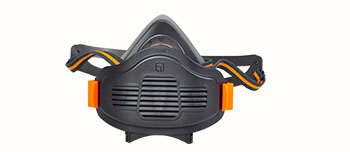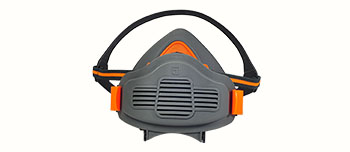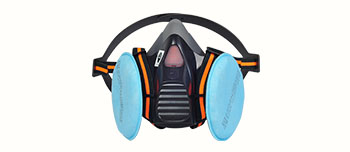In many industrial production environments, occupational health protection is a crucial aspect, especially in related industries such as silica sand processing, transportation, and use. For workers who are exposed to silica sand dust for a long time, choosing and correctly wearing KN100 level protective masks is not an option, but a necessary measure related to their life and health. The reasons behind this are profound and urgent.
1. Invisible Health Killer: Silicon Dust
The main component of silica sand is silicon dioxide (SiO ₂), which generates a large amount of extremely fine dust during processes such as crushing, screening, grinding, and transportation, commonly known as "silica dust". These dust particles are difficult to detect with the naked eye, but they can remain suspended in the air for a long time. Once workers inhale through the respiratory tract, silica dust will deposit in the lungs.
The harm of silica dust to human lungs is fatal. It can cause fibrosis of lung tissue, forming scar like tissue that causes the lungs to lose elasticity and hinder effective gas exchange. This irreversible and progressive disease is called "silicosis". Silicosis is currently incurable, and patients may gradually experience symptoms such as coughing, chest tightness, difficulty breathing, severe loss of labor ability, and even death due to respiratory failure. In addition, inhaling silica dust can significantly increase the risk of developing tuberculosis, chronic bronchitis, and lung cancer.

2. KN100 Mask: Why is it the highest level choice?
The protection level of masks directly determines the concentration of harmful substances inhaled by workers. The GB2626-2019 standard in China categorizes particulate matter masks into three levels:
KN90: Filtration efficiency for non oily particles ≥ 90%
KN95: Filtration efficiency for non oily particles ≥ 95%
KN100: Filtration efficiency for non oily particles ≥ 99.97%
Silica sand dust is a typical non oily particulate matter. The KN100 mask means that it can achieve a filtration efficiency of up to 99.97% for non oily particles above 0.075 microns. This level far exceeds ordinary KN95 masks and can almost perfectly block extremely fine silicon dust particles from entering the lungs.
In a work environment with extremely high concentration of silica sand dust, choosing a KN95 mask may mean that a considerable amount of dust is still being inhaled. The KN100 mask provides the highest level of protection in the field of respiratory protection, building the strongest line of defense for workers and minimizing risks.
3. Not only filtration: the importance of comprehensive protection
In addition to efficient filtering materials, qualified KN100 masks are also designed to ensure effective protection:
Tightness: The protective effect of a mask depends not only on the filtering material, but also on the degree of tightness between the mask and the face. If there are gaps, dusty air will be directly inhaled without filtration. KN100 masks are usually equipped with adjustable nose clips and high-quality headbands to ensure good fit with different face shapes.
 English
English





